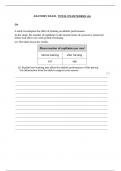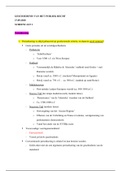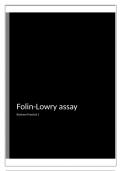Exam (elaborations)
ANATOMY EXAM
- Course
- Life Sciences
- Institution
- 11th Grade
This exam covers the following topics, respiration, the circulatory system, animal digestive systems, enzymes, plant and animal cells, the ventilation system, the nervous system and genetics as well as other anatomy related questions. The exam has questions with varying ability levels. The exam h...
[Show more]





